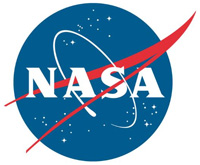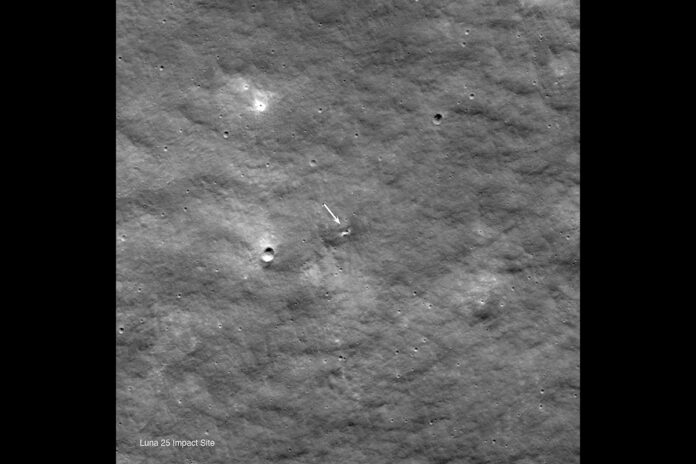 Greenbelt, MD – NASA’s LRO – the Lunar Reconnaissance Orbiter – spacecraft imaged a new crater on the Moon’s surface that is likely the impact site of Russia’s Luna 25 mission.
Greenbelt, MD – NASA’s LRO – the Lunar Reconnaissance Orbiter – spacecraft imaged a new crater on the Moon’s surface that is likely the impact site of Russia’s Luna 25 mission.
During its descent, Luna 25 experienced an anomaly that caused it to impact the surface of the Moon on August 19th.
Roscosmos, Russia’s space agency, published an estimate of the impact point on August 21st. The LROC (short for LRO Camera) team and the LRO Mission Operations team were able to design and send commands to the LRO spacecraft on August 22nd to capture images of the site.
The sequence began on August 24th at 3:15pm CDT (18:15 UTC) and was completed about four hours later, at 7:12pm CDT (22:12 UTC). The LROC team compared images taken prior to the impact time and the sequence taken after and found a small new crater.
LRO’s most recent “before” image of the area was captured in June 2022 (frame No. M1410024427R); thus, the crater formed sometime after that date. Since this new crater is close to the Luna 25 estimated impact point, the LRO team concludes it is likely to be from that mission, rather than a natural impactor.
The new crater is about 10 meters in diameter and is located at 57.865 degrees south latitude and 61.360 degrees east longitude at an elevation of about minus 360 meters. The impact point was on the steep (greater than 20-degree grade) inner rim of Pontécoulant G crater, about 400 kilometers short of Luna 25’s intended landing point at 69.545 degrees south, 43.544 degrees east.
About NASA’s Lunar Reconnaissance Orbiter
NASA’s Lunar Reconnaissance Orbiter (LRO) is managed by NASA’s Goddard Space Flight Center in Greenbelt, Maryland, for the Science Mission Directorate at the agency’s Headquarters in Washington. Launched on June 18, 2009, LRO has collected a treasure trove of data with its seven powerful instruments, making an invaluable contribution to our knowledge about the Moon. Arizona State University manages and operates LROC.



